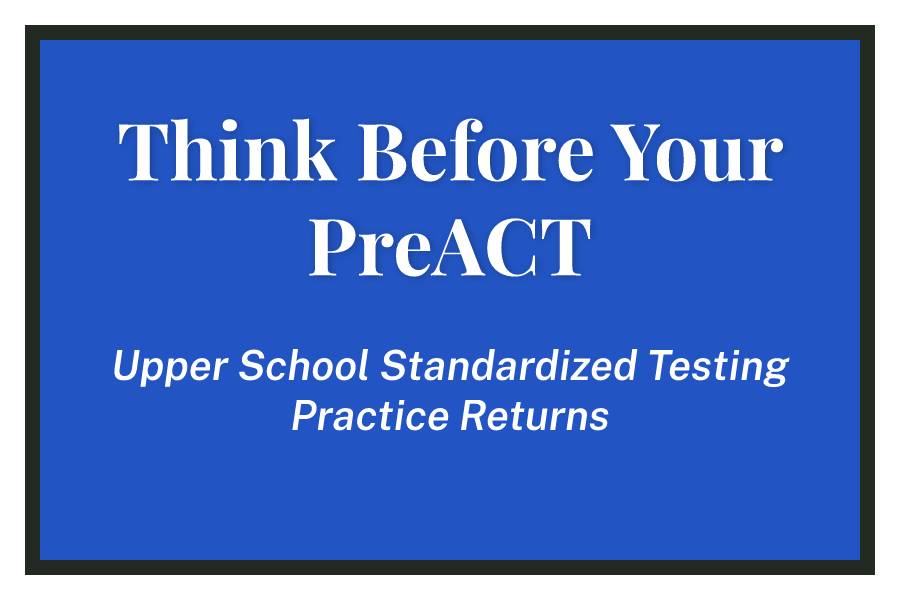Think Before Your PreACT
Upper School Standardized Testing Practice Returns
The PreACT is a test that gets high schoolers ready for exams, which in turn gets them into colleges. Freshmen and sophomores take the PreACT while juniors take the PSAT. The event affects everyone in the building — whether it means the first graders cannot roam free in the hallways or a junior having to feel that pit in their stomach when they don’t know the answer to a question.
Some students may not care about the scores emailed to them three months after sitting in a room for four hours, but some may be waiting in anticipation for them. Regardless of its consequences, testing day is a very important day because it allows students to be able to compare past scores to current ones, and shows what they need to improve upon.
Ninth through 11th graders arrived at school on Wednesday, October 12 to take their PreACT or PSAT tests. Students were required to bring calculators and at least a few number two pencils. Upper school students filed into the auditorium at 8:10 AM where Christopher Arnold, Head of Upper School, gave information about the day ahead and directed students to their test locations.
When freshmen and sophomores walked into the Big Gym, they saw identical brown tables and blue chairs set up, each with a PreACT packet laying in on top of them. While this was happening, juniors entered the Draft Gym to settle into their workplace.
Not only did students have to take tests for four hours, but the teachers also had to be present for the whole morning, walking around and continuously monitoring students. “It kept us busy. It’s really kind of tiring. I’m sure you guys felt the same way,” Elizabeth Druger, science teacher and three time PreACT proctor, said. “We’re walking around and answering questions. It’s like, you know, the first half of the day is, you know, really, really busy when we’re working with you guys.”
Senior Lydia Blasko thinks that the practices she has taken at Parker have been valuable towards her prep for standardized tests. “I think it’s made me more aware of what I needed to work on,” Blasko said. She explained how she got a good sense of what her areas of improvement would be after taking the PreACT as a sophomore.
“I wasn’t really worried about it because I’m taking the PSAT,” junior Audrey Fuder said. “I did want to do well though to get more practice with testing and I thought it was a valuable experience.”
When taking the PreACT, students participated in Writing, Math, Reading, and Science tests. Most had a 30-minute time limit, except for the Math test, which took 40. Throughout the tests, students had two five-minute breaks and one 15-minute break between tests two and three.
When taking the PreACT, students are not allowed to eat, drink, text, or talk to each other during tests. If a student is seen talking to others during the test by a proctor, their scores are nullified. Many students might wish they could change these rules, but because the PreACT is taken all around the world, Parker is forced to comply strictly.
Not only is the preACT usually a test regarding students’ skills, it is also a test of their attention span. If a student cannot sit still and answer confusing, often wordy questions, then it is possible that questions they usually know are answered incorrectly due to stress.
Druger has an idea on how to fix the test fatigue. “I would say maybe break it up into individual components,” she said. “Like, oh, today is the PreACT science test. Today is the PreACT math test and it’s 30 or 40 minutes. So you’re not also testing your ability to sustain attention for four small tests in a row. I think that might be a nice tweak, although I suspect they don’t do it because it would be really hard to implement.”
Druger believes that although the tests can feel very important, it is even more important to keep everything in perspective. “Enjoy your childhood. You shouldn’t be spending all your time studying,” Ms. Druger said.








